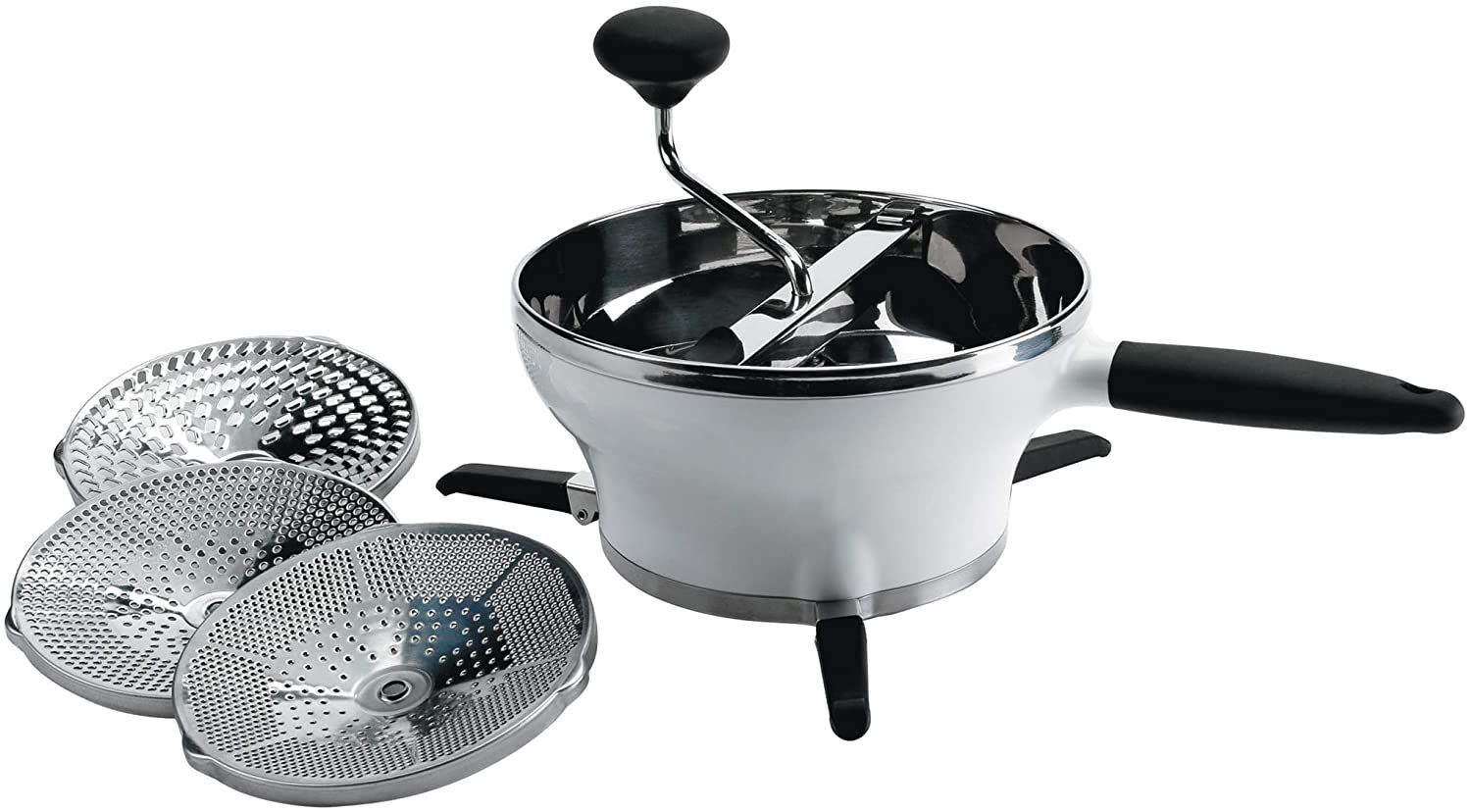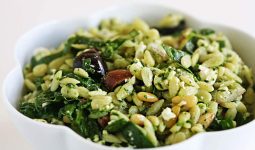At first glance, a food mill may seem like a complex and unfathomable tool, the only kind of tool for professional chefs, and that’s if you know “what a food mill” and why you are here anyway.
However, it is one of the most versatile and practical tools for chefs and home cooks.
This low-tech, high-efficiency appliance is your key to that easy applesauce, smooth mashed potatoes, and more.
Below, you will learn what a food mill is, its different parts, and its uses.
What is a Food Mill?

Whether it’s turning boiled apples into awesome applesauce, freshly cooked tomatoes into a classic marinara, or steamed potatoes into a delicious mash, the Food Mill makes its standing by being skilled with notoriously difficult-to-prep ingredients.
Think of a food mill as a low-tech version of a food processor, with no plugs or motors, just a handle crank that spins with a bit of help from you and your biceps.
A food mill is a kitchen appliance used to grind or puree foods. It can also be used to produce a smooth mash without seeds, skins, or stems when making preserves or canning.
A food mill may also be called a rotary mill, passatutto, purée sieve, passe vitte, or moulinette.
What can a food mill do that a processor can’t? For beginners, the sharp blade of a food processor will turn your chewy mashed potato dream into a gooey nightmare faster than you can say “buttermilk.”
Ask any canning enthusiast or homesteader what their favorite time-saving tools are, and you can bet a food mill tops the list.
In fact, a food mill can simultaneously puree and strain food so efficiently that it eliminates the tedious task of peeling fruits and vegetables.
Parts of a Food Mill
A standard food mill is usually a manual device consisting of three parts: the bowl, a perforated disk at the bottom, and the hand crank at the top, which moves the metal blade that pushes food through the plate.
It is shaped like an inverted cone that has a wide mouth with legs or projections to sit on top of the bowl and hold steady while the food to be sauced is poured and the crank is turned.
On the bottom, perforated, strain the crushed food into the receiving bowl.
A grinding blade is attached to the crank. As you turn the crank, the food is mashed into the perforated plate at the bottom of the food mill, which forces it through the holes in the sieve into the bowl you place below.
The outcome of this old-timey churning is a smooth purée with no seeds, pits, skins, or stems.
Food mills often have interchangeable perforated sieve plates for finer or coarser purées.
If you reverse the direction of the hand crank after extracting as much as possible, the seeds, skins, and other debris will go to the top of the grinding plate.
You can then invert the food mill to your trash can or compost bin and dispose of the debris.
What Do You Use a Food Mill for?
You can use a food mill to mash and strain food to the desired consistency, like tomato sauce or applesauce.
The mill has the advantage of being able to add hot or cold foods, soft or semi-solid foods, unpeeled or unskinned fruits, and vegetables and produce a puree without skins or seeds.
This leads to less food waste than peeling or removing the seeds. Only a small amount of residue and seeds remain after grinding, which can be composted or thrown away.
Some other common uses of a food mill include making jams, jellies, preserves, etc., and straining more fruits or foods than a sieve.
Conclusion
However, you might want to ask yourself why you chose a food mill over a potato masher, food processor, strainer, or blender.
Here’s a simple answer: no other tool can crush and filter food so cleanly and consistently, all at the same time.
Some food mills also have three disks from fine, medium, or coarse texture.
Owning a food mill means there’s no longer any need to transfer hot food from the blender, push tomatoes through a sieve, or work tirelessly to extract every morsel of mashed potato before it becomes a gummy mess.
Are you afraid of stress from cleaning and washing? The food mill can be easily washed in the dishwasher and disassembled for cleaning and washing.
Here is a sign to get a food mill today.








